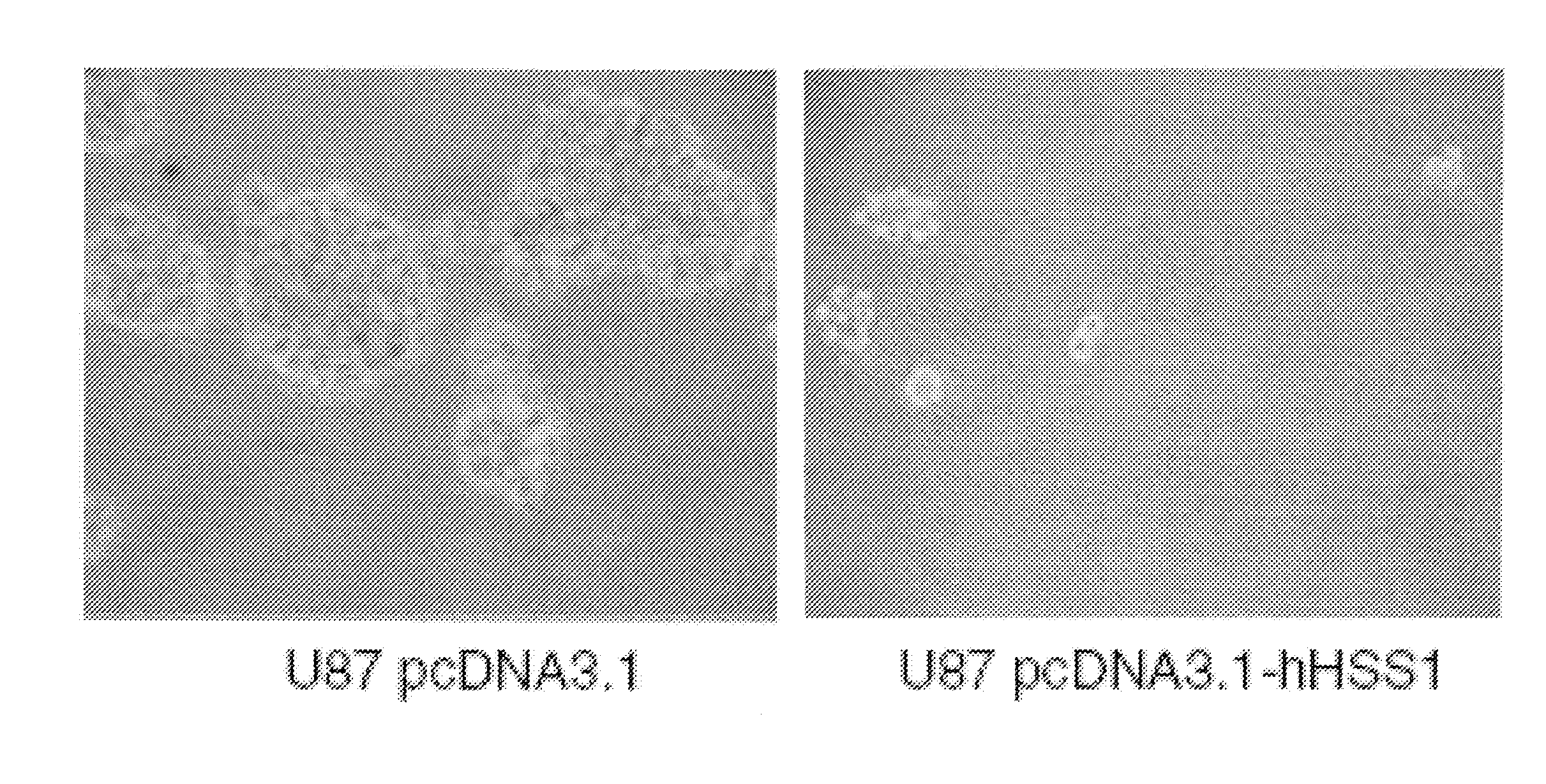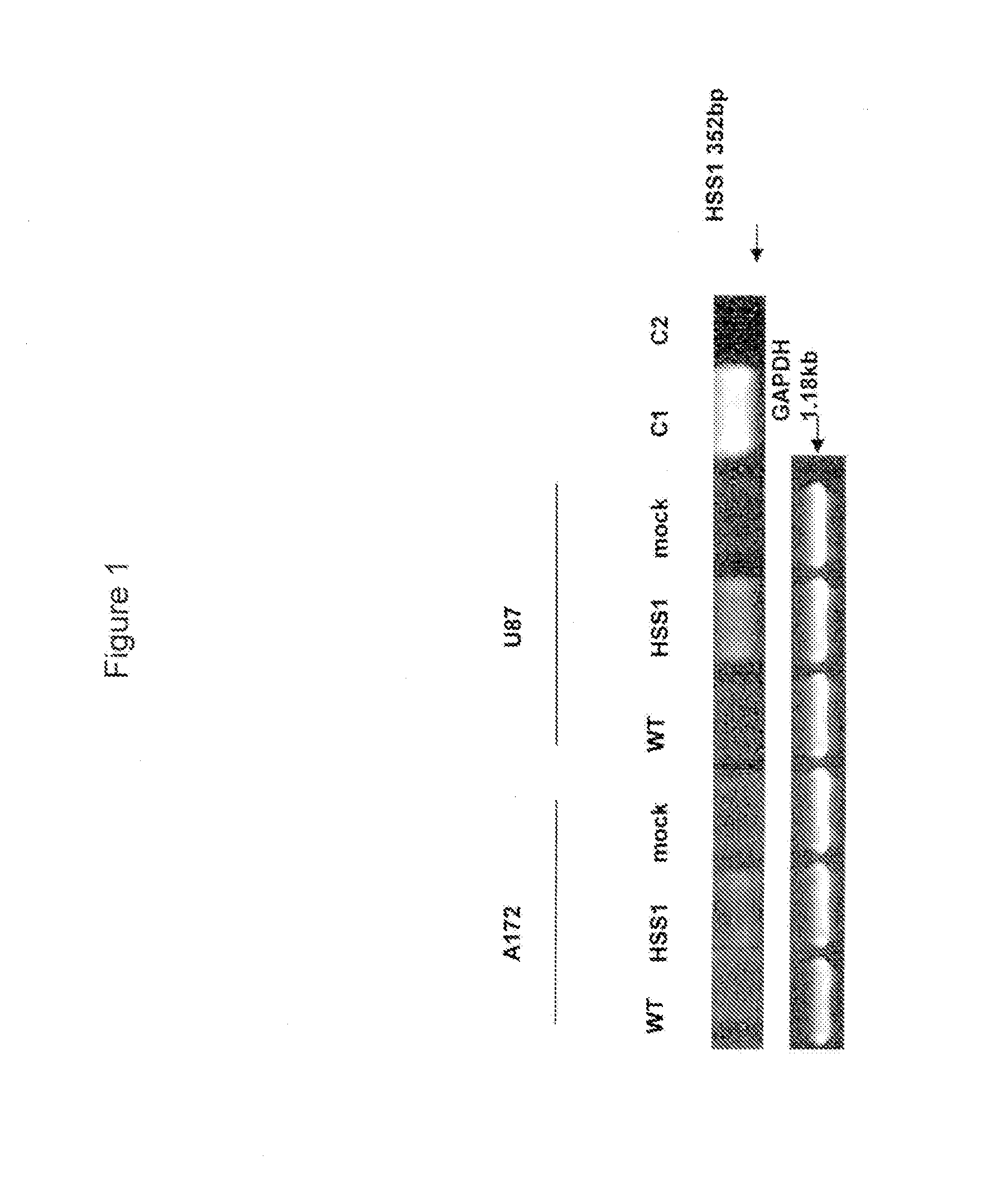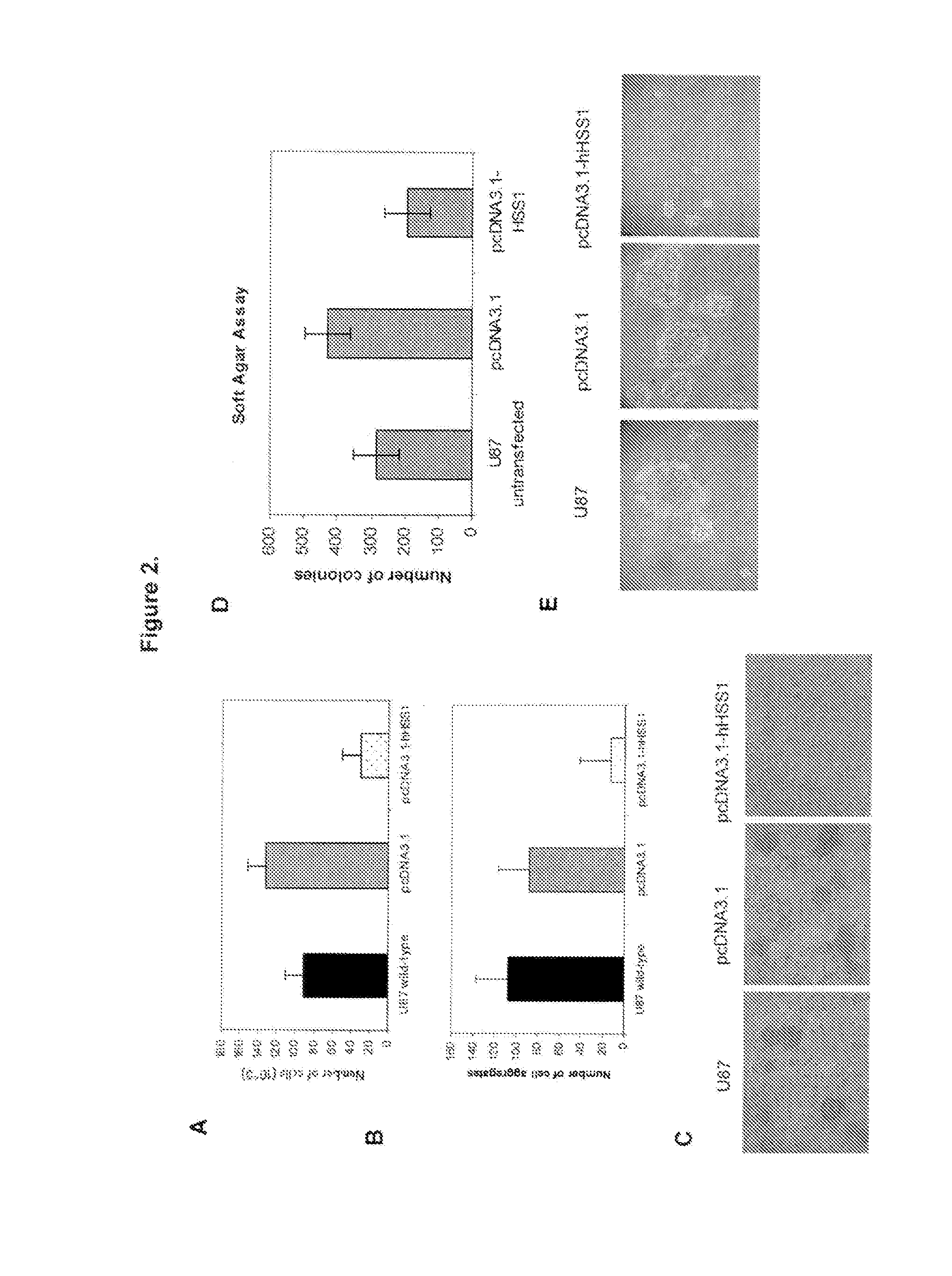Method for treating brain cancer using a novel tumor suppressor gene and secreted factor
a tumor suppressor and gene technology, applied in the field of brain cancer treatment, can solve the problems of few identified tumor suppressor genes as secreted factors in the human circulatory system, no identified tumor suppressor genes have been utilized in the treatment of cancer, etc., and achieve the effects of reducing tumor mass, reducing tumors, and reducing tumors
- Summary
- Abstract
- Description
- Claims
- Application Information
AI Technical Summary
Benefits of technology
Problems solved by technology
Method used
Image
Examples
example 1
Isolation of HSS1 cDNA
[0109]The murine form of HSS1 (mHSS1) was isolated via PCR from a lineage-negative mouse bone marrow cDNA library. (Zhao et al., Blood, 96:3016-3022 (2000)). The human form of HSS1 (hHSS1) was isolated from a cDNA human testis library (Human MTC Multiple Tissue cDNA Panel II, Clontech). Primers were based upon predicted gene sequences and PCR products were sequenced to confirm the DNA sequence of both human and mouse HSS1 genes.
[0110]Cell Culture and hHSS1 Expression Vector Construct
[0111]Human embryonic kidney 293T and A172 glioma cell lines (ATCC, Manassas, Va. USA) were cultured in DMEM supplemented with 10% FBS. The human U87 glioma cell line (ATCC HTB-14) was maintained in alpha-MEM supplemented with 10% FBS, non-essential amino acids, sodium pyruvate and sodium bicarbonate. The pTT3-hHSS1 expression construct was kindly provided by Dr. W. French Anderson. The hHSS1 cDNA was subcloned from pTT3 vector into the EcoRI and HindIII sites of pcDNA.3.1 mammalian...
example 2
Functional Characterization of HSS1—a Novel Protein with No Known Homology to Other Known Proteins or Other Known Protein Domains with Functional Properties of a Candidate Tumor Suppressor
[0112]HSS1 is not Expressed in the A172 and U87 Glioma-Derived Cell Lines
[0113]Since HSS1 is located at a chromosomal region known to have aberrations or deletions in a variety of gliomas, the inventors investigated whether HSS1 could affect the malignant properties of two well-studied human glioma-derived cell lines, namely A172 and U87, by using cell proliferation and soft agar assays. The inventors chose these cell lines as the subject of their investigations because a previous report suggested that the broad region corresponding to the gene locus of HSS1 at 19q13.33 was deleted in these glioblastoma cell lines [22]. Moreover, this report concluded that the A172 and U87 cell lines contained 19q deletions similar to those found in sporadic human gliomas, and as such would be useful for evaluating...
example 3
[0125]Transient Transfection and Immunoblotting
[0126]Following the cell culture from Example 1, supernatants containing the hHSS1 protein were produced by transient transfection of 293T cells harvested after 48 h post-tranfection using the Calcium Phosphate Transfection kit (Invitrogen) and 4 μg of plasmid DNA purified with a Qiagen column (Qiagen, Valencia, Calif., USA). Conditioned media from 293T cells were harvested, concentrated using a Macrosep centrifugal device (Pall, East Hills, N.Y., USA) and stored in aliquots at 4° C. Protein expression was confirmed by Western blot in both supernatant and cell lysate prepared from 2×105 cells using a standard protocol and mass spectrometry. An anti-His (C-term)-HRP antibody (Invitrogen) allowed detection of hHSS1 protein by Western blot. Immunoreactive bands were visualized by colorimetric detection using TMB solution (Invitrogen). The glycosylation pattern of HSS1 was assessed by treating cell lysates with PNGase F, Sialidase and O-gly...
PUM
 Login to View More
Login to View More Abstract
Description
Claims
Application Information
 Login to View More
Login to View More - R&D
- Intellectual Property
- Life Sciences
- Materials
- Tech Scout
- Unparalleled Data Quality
- Higher Quality Content
- 60% Fewer Hallucinations
Browse by: Latest US Patents, China's latest patents, Technical Efficacy Thesaurus, Application Domain, Technology Topic, Popular Technical Reports.
© 2025 PatSnap. All rights reserved.Legal|Privacy policy|Modern Slavery Act Transparency Statement|Sitemap|About US| Contact US: help@patsnap.com



